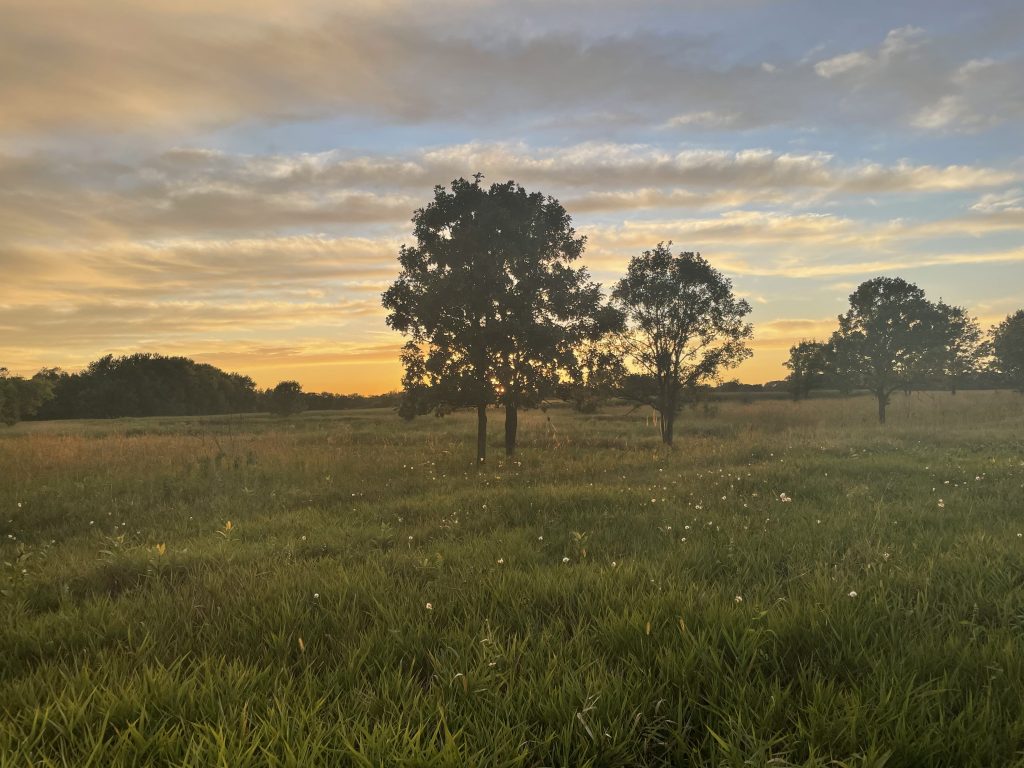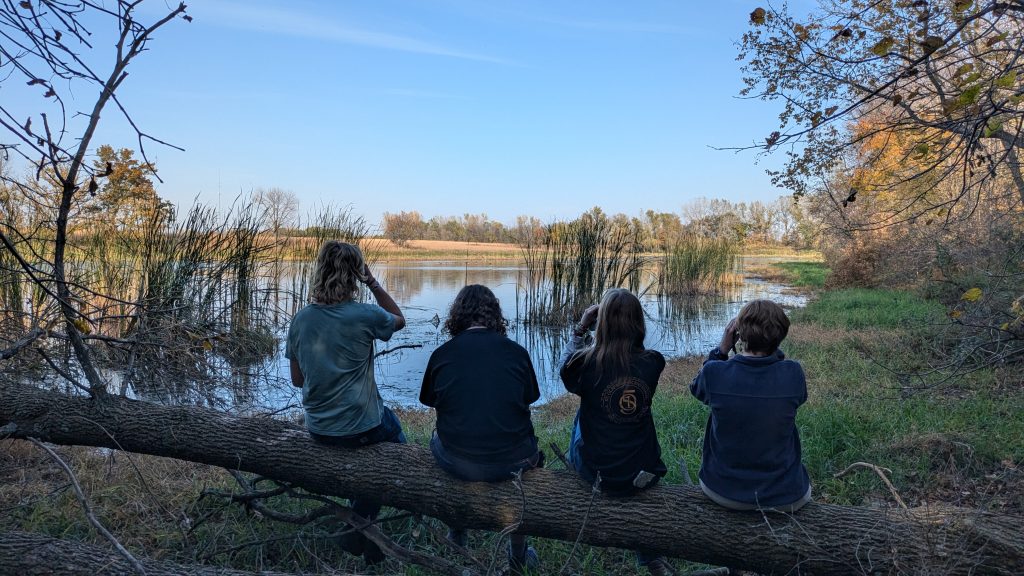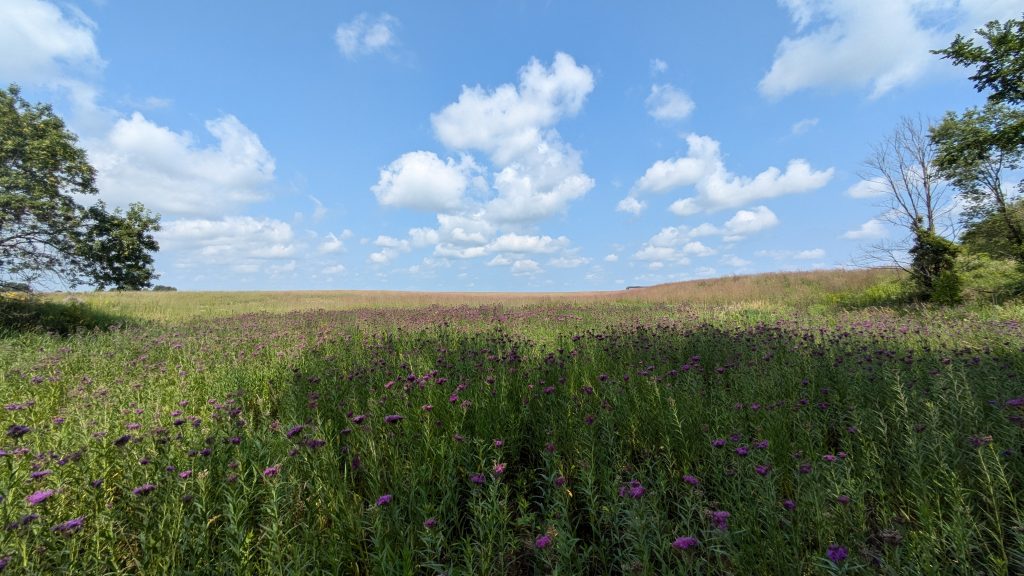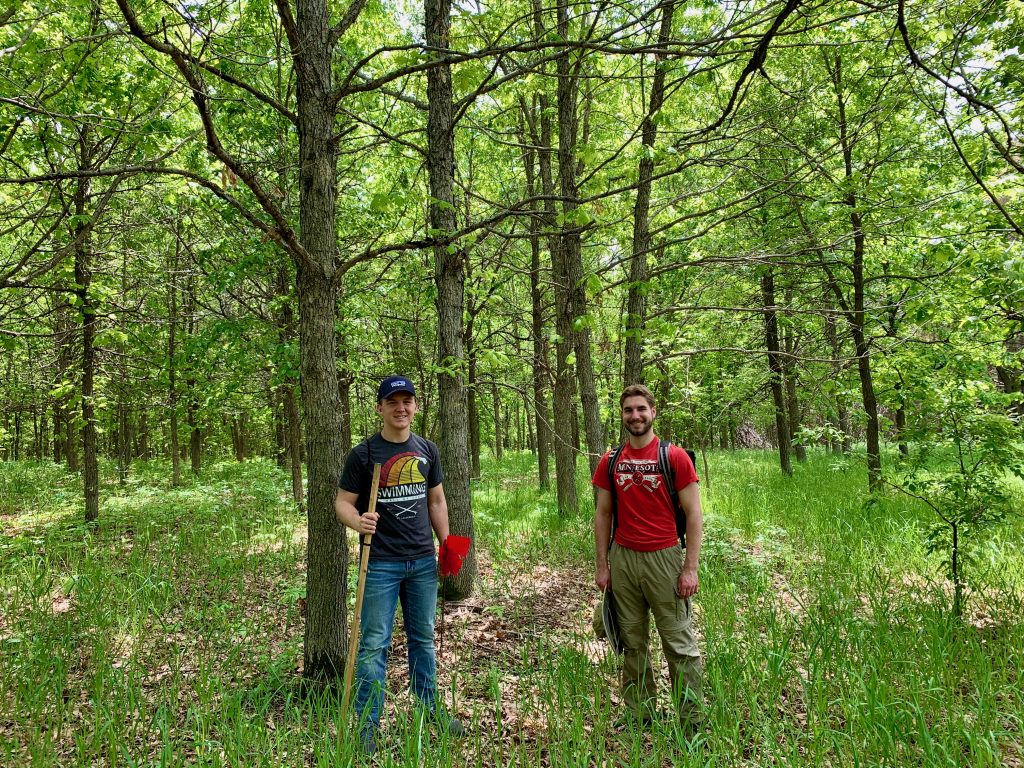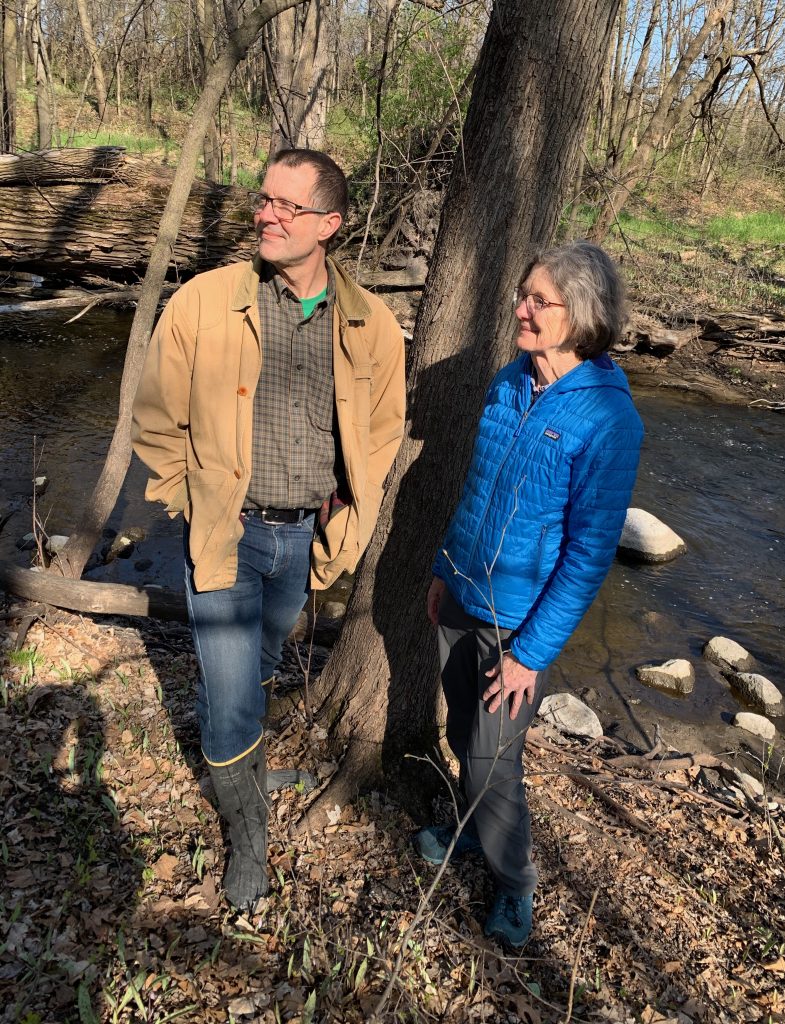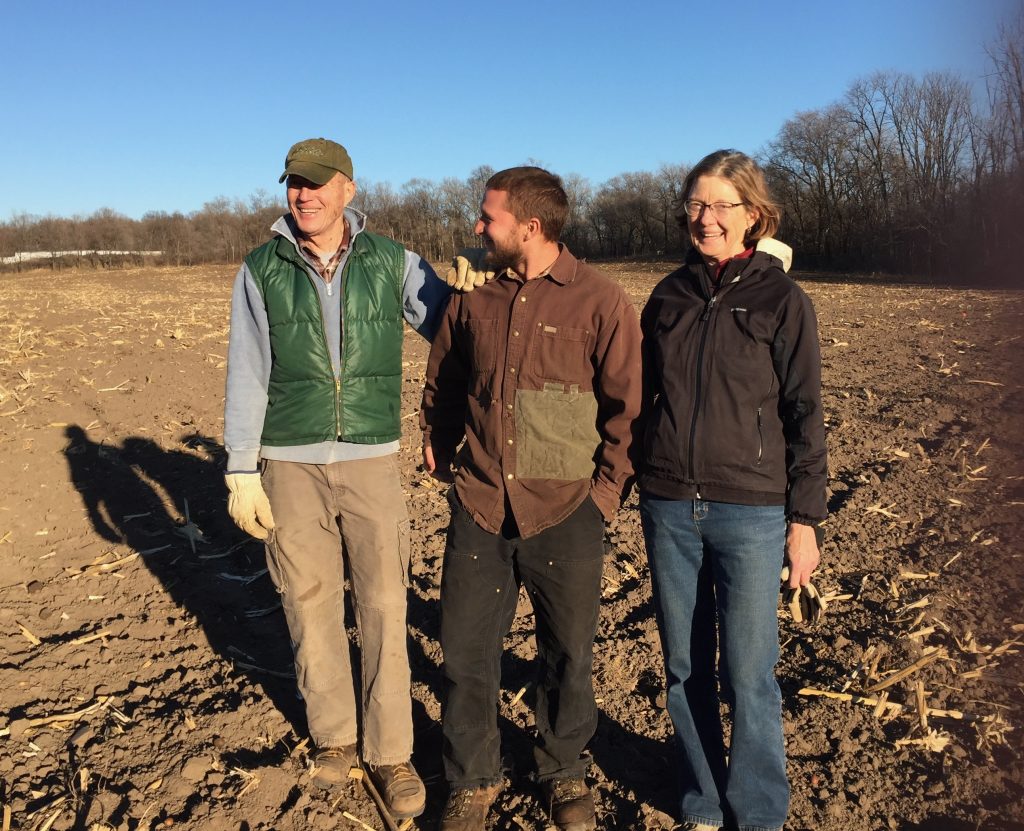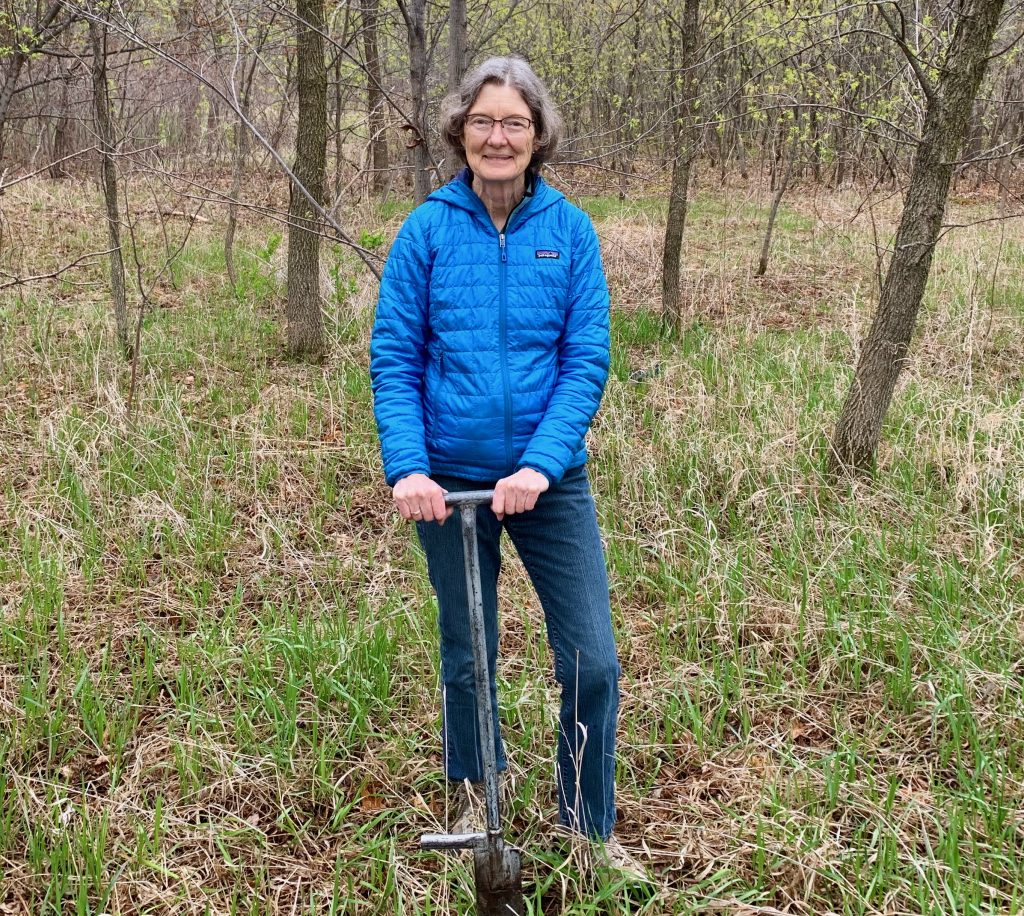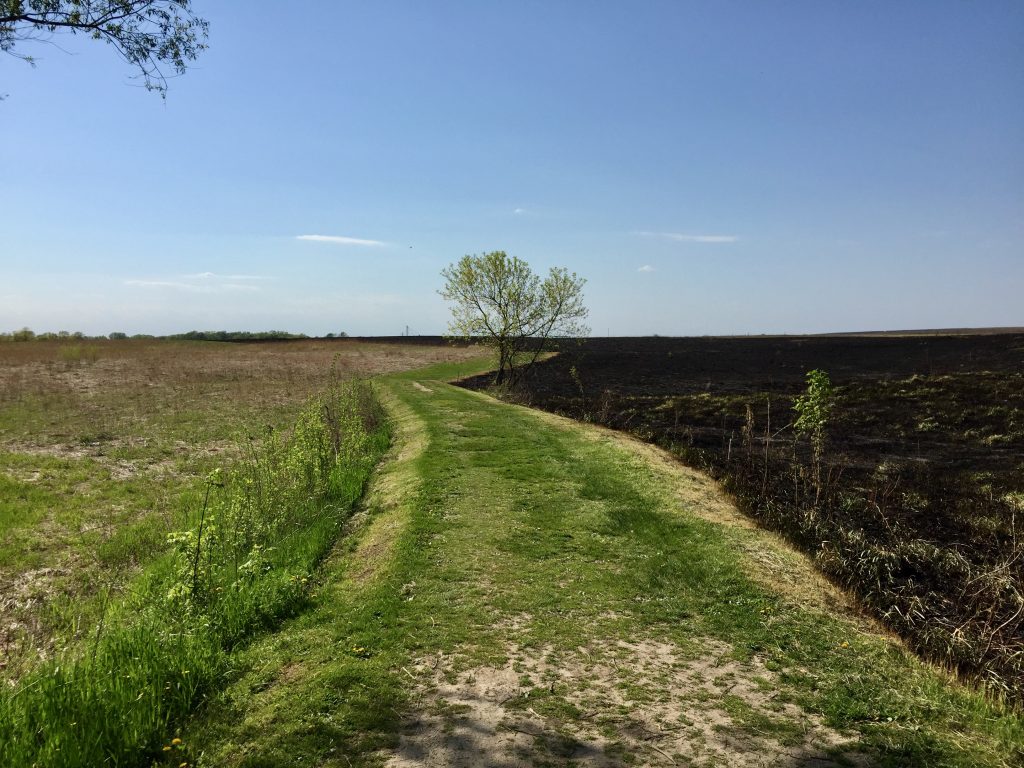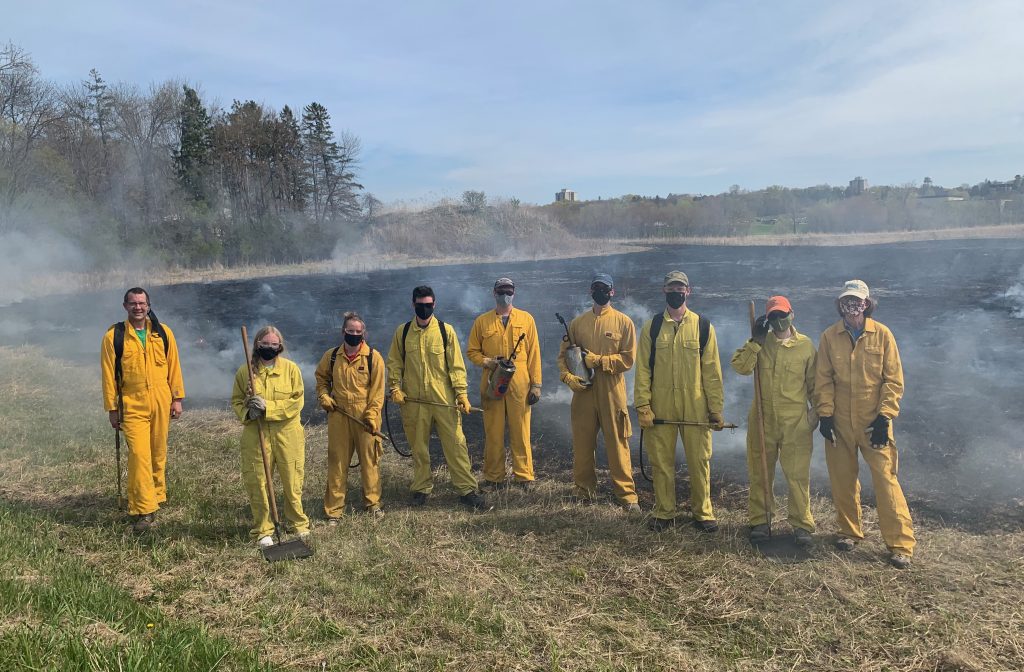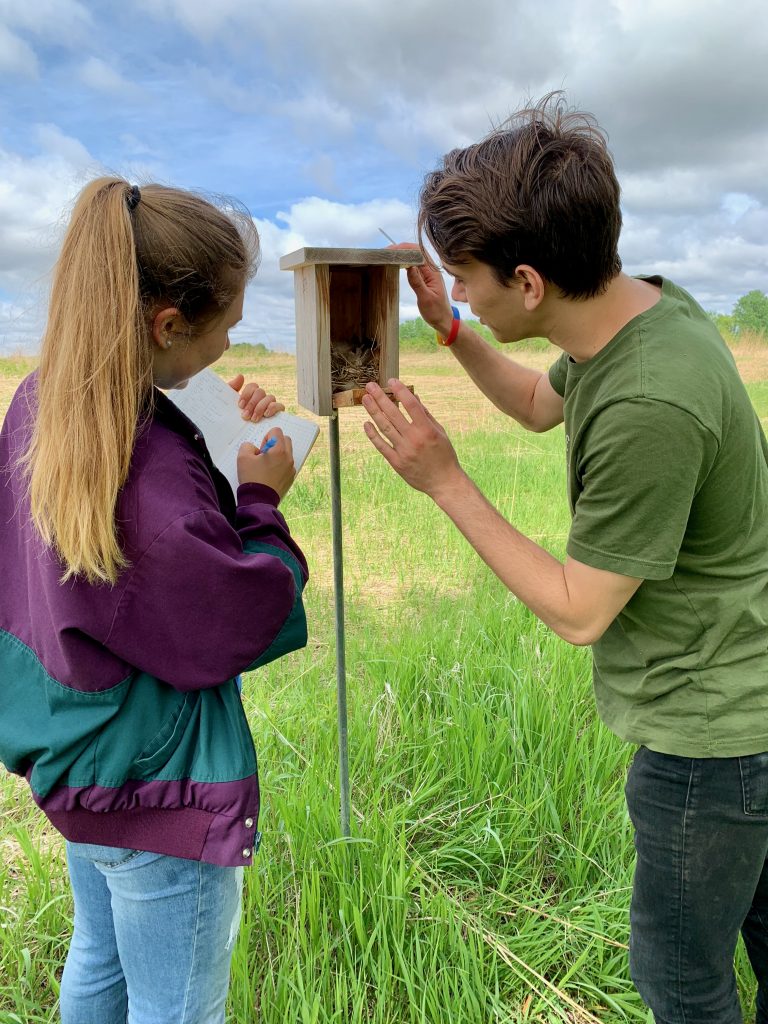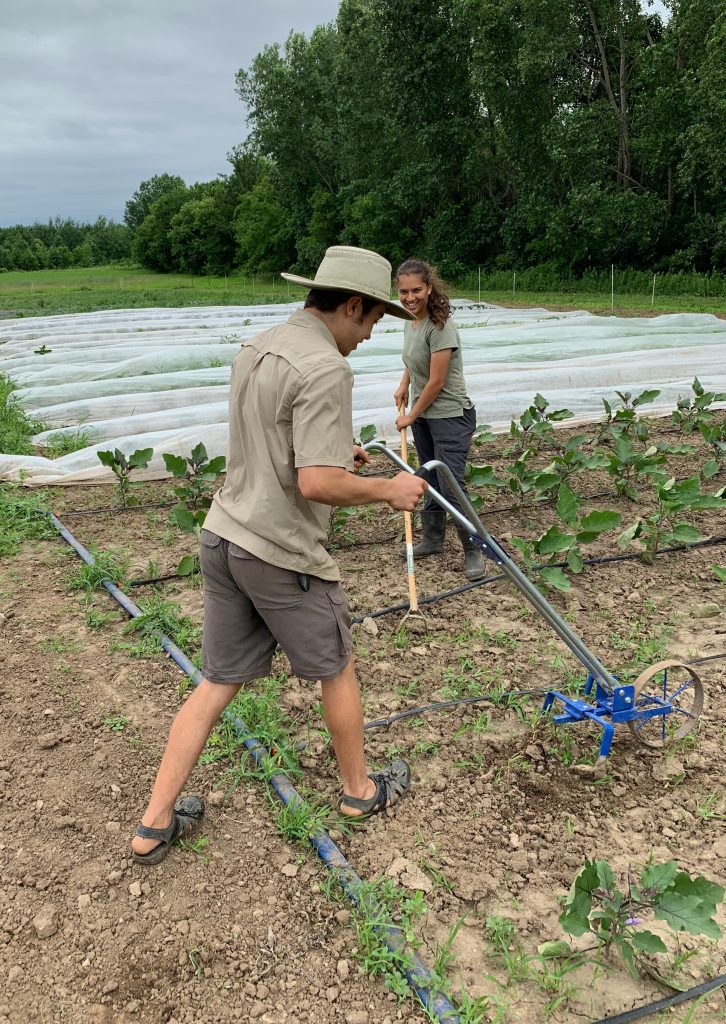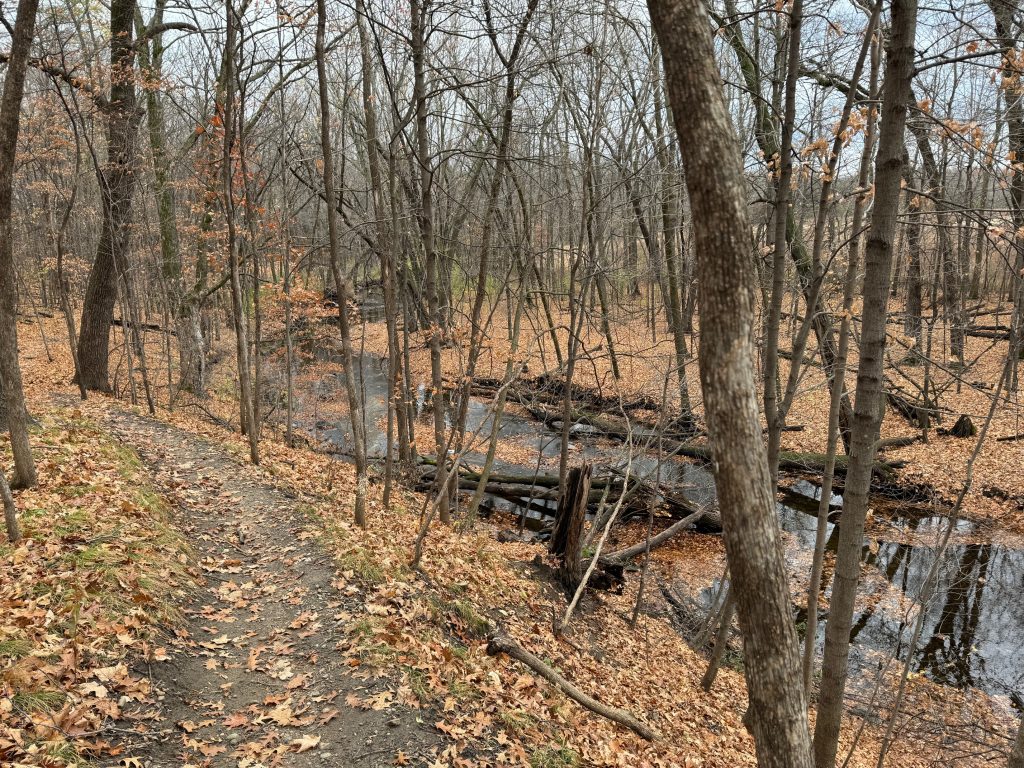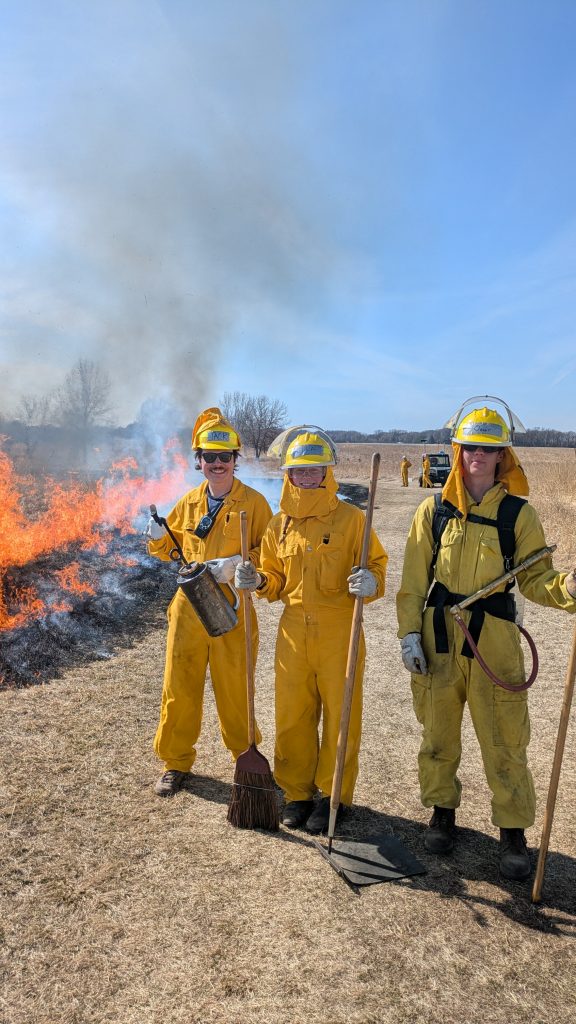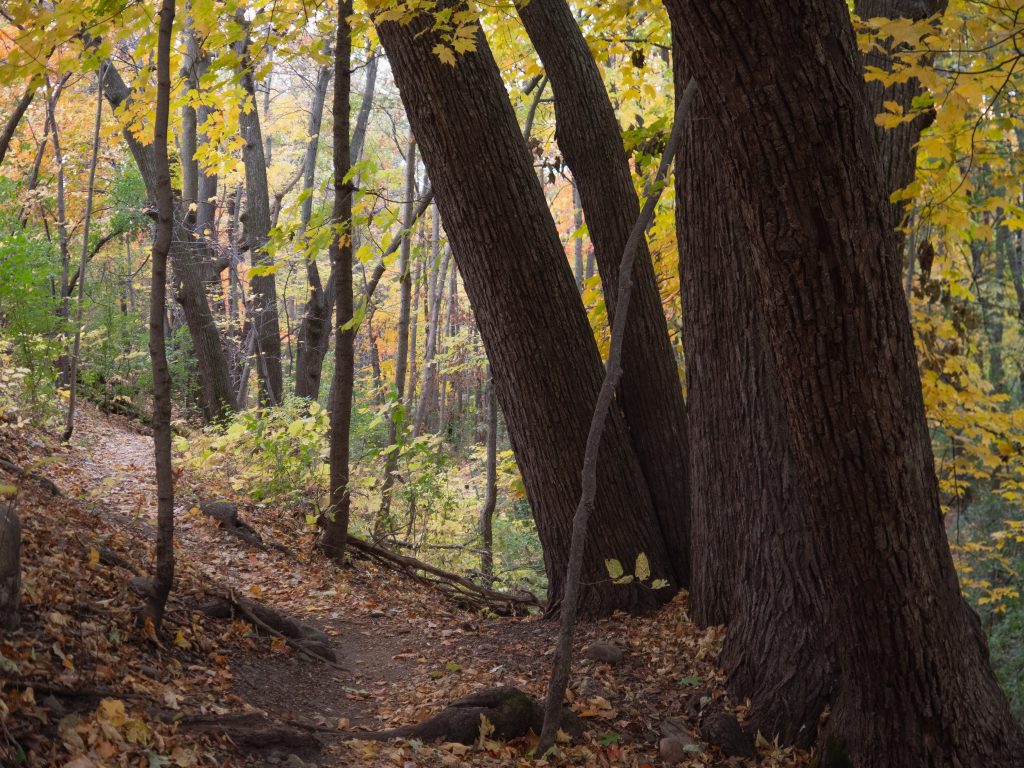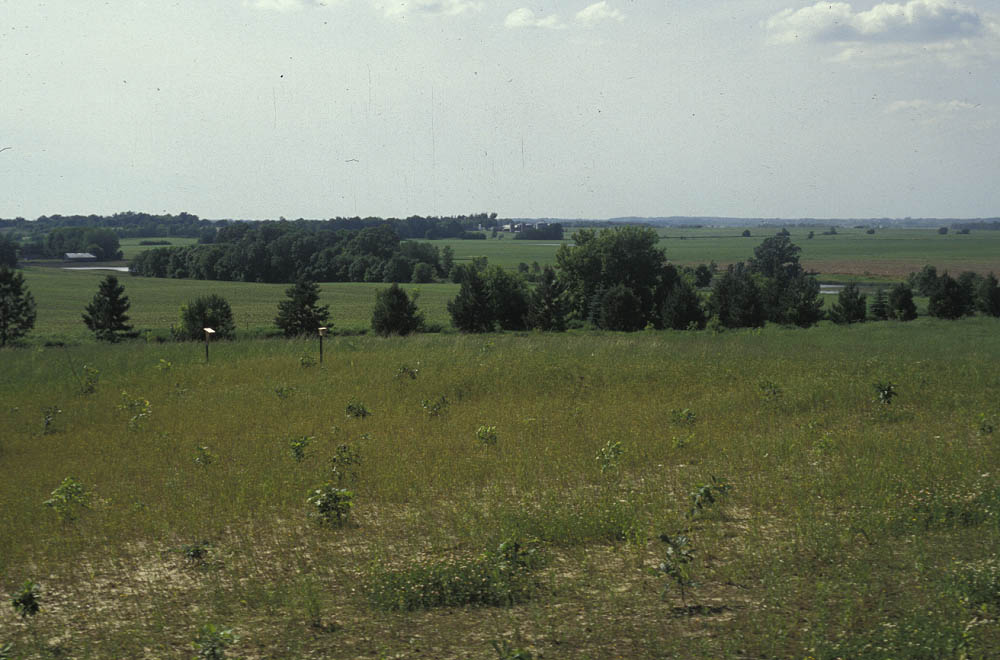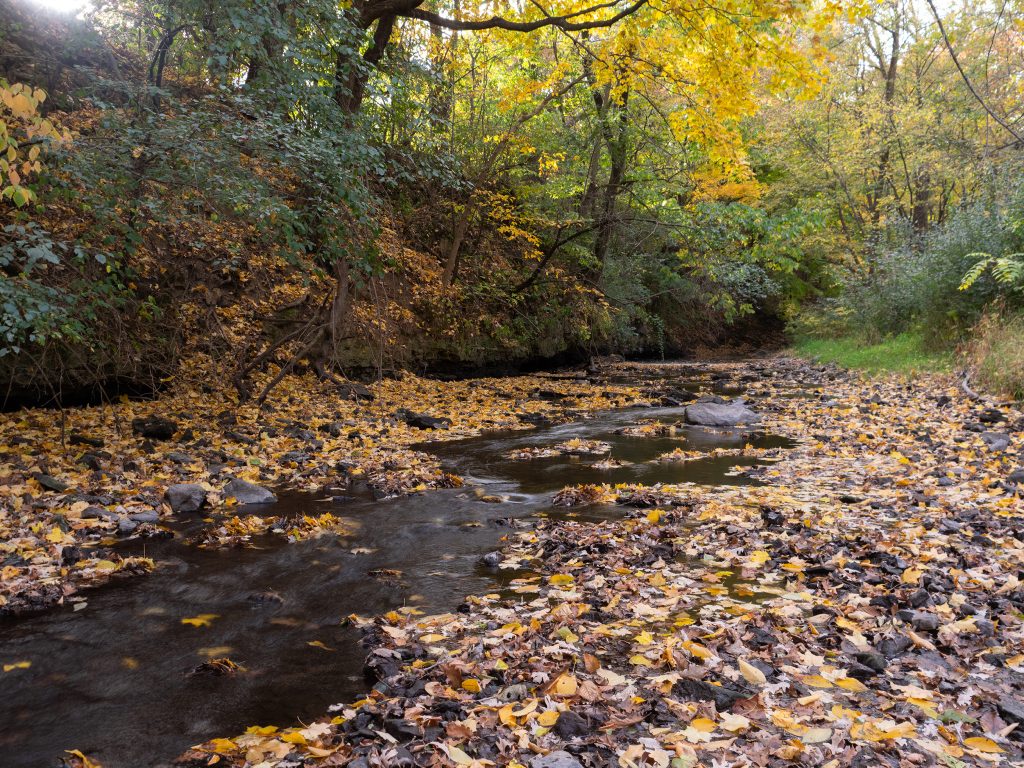This Earth Day marks the 35th anniversary of the creation of the St. Olaf Natural Lands, a powerful outdoor laboratory for the sciences and environmental preservation. In this reflection submitted as part of the St. Olaf Sesquicentennial, Professor Emerita of Biology Kathy Shea shares how one of the college’s most treasured resources came to be.
One of the most fulling projects I worked on as a faculty member at St. Olaf College was the development of the St. Olaf Natural Lands. I had the privilege of being Curator (Director) of the Natural Lands from 2009-2021. Over this 12-year period, we maintained and established restored forest, prairies, and wetlands that were started mainly in the 1990s. Professor Emeritus of Biology Gene Bakko was the first Curator from 2000-2009 and Professor of Biology and Environmental Studies Charles Umbanhowar Jr. is the third and current Director of Natural Lands (2021-present).
The idea of restoring natural areas first became a reality to me in 1987 as a new faculty member at St. Olaf. There was concern among faculty about construction of a new dormitory, Ytterboe Hall, taking out much of the forest on the west side of campus. Gene talked with then–St. Olaf President Mel George. As a result, the architects were asked to re-site the building to take down as few trees as possible. Several faculty and students then dug up tree seedlings/saplings likely to be disturbed by the building construction and planted them on a nearby hillside where a dangerous cave had been destroyed. Shortly after, in 1989 and 1990, there were tree plantings by faculty, staff, and students on former agricultural land adjacent to the main campus. The 1990 Earth Day tree planting west of campus is used as the official beginning of the Natural Lands and involved many students, staff, and faculty. We celebrated the 30th anniversary of the Natural Lands in 2020.
Over the past 30-some years, principally through work by members of the Biology and Environmental Studies Departments, there have been multiple natural habitat restoration projects. We now have more than 430 acres dedicated to natural habitat, with 150 acres of restored native prairie, 200 acres of restored and existing forest, and 12 restored wetlands. These areas provide a wealth of learning experiences for our students, from casual observations to independent research, as well as ecosystem services such as carbon sequestration, decreased runoff, and wildlife habitat. The Natural Lands provide aesthetic and recreational resources for the campus and Northfield community, from activities such as cross-country meets to helping preschoolers learn about the natural world. The collective work in the Natural Lands strives to reflect the Natural Lands Mission Statement: to promote education, conservation, and recreation in our local ecosystems.
“We now have more than 430 acres dedicated to natural habitat, with 150 acres of restored native prairie, 200 acres of restored and existing forest, and 12 restored wetlands. These areas provide a wealth of learning experiences for our students, from casual observations to independent research, as well as ecosystem services such as carbon sequestration, decreased runoff, and wildlife habitat.”
St. Olaf was fortunate to own agricultural land near the main campus that was available for restoration. The land, a receptive administration, dedicated faculty, and government programs to provide initial financing made the Natural Lands possible. This resource is now a core component of the educational program at St. Olaf. A survey of the Natural Lands in 2020 found that having the Natural Lands either influenced or somewhat influenced the decision of 47 percent of the students responding to attend St. Olaf. Going to the Natural Lands provides the opportunity to relieve stress, feel refreshed, and exercise the body, as well as learn about nature and conservation from multiple points of view.
As we challenge students to discover their calling or vocation in life, we encourage students to make environmental stewardship part of their vocation. Students want to make the world a better place to live, and practicing sustainable use of our environmental resources leads to happier, healthier, and more fulfilling lives. I taught ecology in an inclusive way, helping students learn about the natural world and how to preserve cultural and personal relationships with nature. Having the Natural Lands as a resource enables students to learn about nature through first-hand experiences and not just reading about it. Along with developing the Natural Lands as a resource, I was part of a group that developed a proposal for Environmental Studies as an academic program, first as a concentration (in 1987) and then as a major (in 2000). Through Environmental Studies, students have the opportunity to focus on the study of nature through social science and humanities perspectives, as well as the natural sciences. Students learn that approaches to environmental problems require inputs from multiple disciplines (such as economics, history, art, biology and chemistry) and multiple cultural perspectives.
“As we challenge students to discover their calling or vocation in life, we encourage students to make environmental stewardship part of their vocation. Students want to make the world a better place to live, and practicing sustainable use of our environmental resources leads to happier, healthier, and more fulfilling lives.”
Key points in the history of the Natural Lands include work by a student, Dave Wedin ’81, who proposed developing the St. Olaf Nature Center and trails in the 1980s. In the 1990s the restoration program was made possible, in part, by the federal Conservation Reserve Program that paid the college to take marginal farmland out of production for conservation of forests and prairies. We planted species to restore the local forest types, mainly maple-basswood forest and oak savanna species. For educational purposes, we planted a section of coniferous tree species from northern Minnesota. The prairies resemble local tall-grass prairies. With the help of the Department of Natural Resources District Forest Office in Faribault, we outlined plans for natural habitat maintenance and restoration on about 350 acres of land adjacent to the main campus. An additional 400 acres were rented to local farmers. The approval of a 100-acre permanent conservation easement through the U.S. Fish and Wildlife Service in the early 2000s made possible restoration of more native tall-grass prairie and a dozen small to large wetlands. The goal was to attract waterfowl, especially during migration, and other wildlife.
Monetary support increased in the early 2000s in the form of endowments, in addition to the support from government agencies and conservation groups such as Ducks Unlimited. The Henry and Agnes Nelson Family Endowment for Natural Lands and Environmental Science was created by Don Nelson ’50, and the Morton and Thelma Egeland Endowment for Environmental Science was created by Paul Egeland ’65. Both endowments support restoration and maintenance of the Natural Lands, faculty and student research, curricular initiatives, and sustainable agricultural practices on college-owned lands. The endowments provide for a faculty director of the Natural Lands who has broad responsibilities to oversee habitat restoration, maintenance, education, and research activities. A full-time Natural Lands Manager is also supported, focusing on hands-on projects in the field and student-work supervision. Several students are hired to work full-time during summers and part-time during the school year to learn about best management practices and develop research projects. More recently, the Nunatuk Fund provided a five-year commitment to support hiring recent St. Olaf graduates as Natural Lands assistants, and a gift to the endowment from Arlen Erdahl ’53 and Ellen Syrdal Erdahl ’57 is supporting education and outreach to the campus and broader community.
Environmental stewardship extends to making agricultural practices more sustainable. Student initiatives led to changes in large-scale farming practices on rented St. Olaf land, and development of a student-run organic farm to sell produce to the campus food service. As part of a research project, student Megan Gregory ’04 compared costs and benefits of corn/soybean farming in fields using conventional methods and fields with reduced tilling, reduced fertilizer, and crop rotations. Her results showed more sustainable methods resulted in equivalent profits with reduced energy use and healthier soils, and led to requiring these more sustainable methods on rented St. Olaf farmland. The organic vegetable farm on campus called STOGROW was initially proposed and developed by students. Its purpose is to provide students the opportunity to learn how to grow, harvest, and sell crops to the campus food service, Bon Appetit. Although the program was initially funded by sales of produce to the food service, the Natural Lands endowment now funds these student positions, and they work closely with both the Natural Lands Director and Manager.
The college administration has strongly supported the Natural Lands program and pledged to maintain natural areas south of North Ave. A review of non-core land use by Boldt Consulting Services in 2007 supported exploring the development of a conservation corridor along Heath Creek south of Highway 19. Post Consumer Brands (a cereal manufacturer in Northfield) donated a strip of land that connected the two St. Olaf–owned wooded parcels south of Highway 19 along Heath Creek and expanded the area west of Heath Creek. We now have beautiful trails along Heath Creek (a tributary of the Cannon River) as part of the Natural Lands.
“As a faculty member, my goal was to help students connect with the land and better understand its importance — not just for humans, but for maintaining biological diversity and functioning ecosystems. Regardless of one’s paid work, one can practice environmental stewardship and help make the world a better place to live.”
The Natural Lands have become a valued resource for students, faculty, and staff. While work continues on educating people about ways to use the Natural Lands, they have become an important part of the educational program at St. Olaf. One way to connect with the land is to find a special spot that you like and return to over time, observing changes. Overall, the lands provide a place for relaxation and spiritual renewal, a place for exercise and development of running and skiing skills, a place for learning and research in multiple academic disciplines, and a place for hands-on training for possible careers. As a faculty member, my goal was to help students connect with the land and better understand its importance — not just for humans, but for maintaining biological diversity and functioning ecosystems. Regardless of one’s paid work, one can practice environmental stewardship and help make the world a better place to live. After 30-some years as an important part of St. Olaf’s education, my hope is that the Natural Lands will only increase in value in the next 30 years and continue to be an integral part of life on The Hill.
